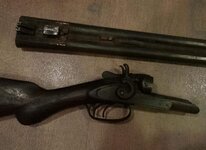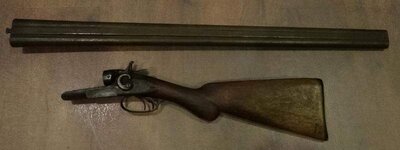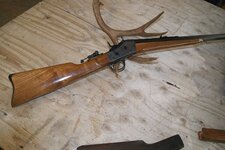Bronze Supporter
- Messages
- 489
- Reactions
- 310
This old 12ga double is in rough shape , but will make a great wall hanger in my gun room .... but would like to know vintage and model # .... all I see on it is ...
Remington Arms Co.
Ilion NY USA
229473 ( ser# )
206
45
P - F5
ALSO ... is there any way to take the surface rust off without damage ?
Any help would be great ...
Thanks... Doug



Remington Arms Co.
Ilion NY USA
229473 ( ser# )
206
45
P - F5
ALSO ... is there any way to take the surface rust off without damage ?
Any help would be great ...
Thanks... Doug


















